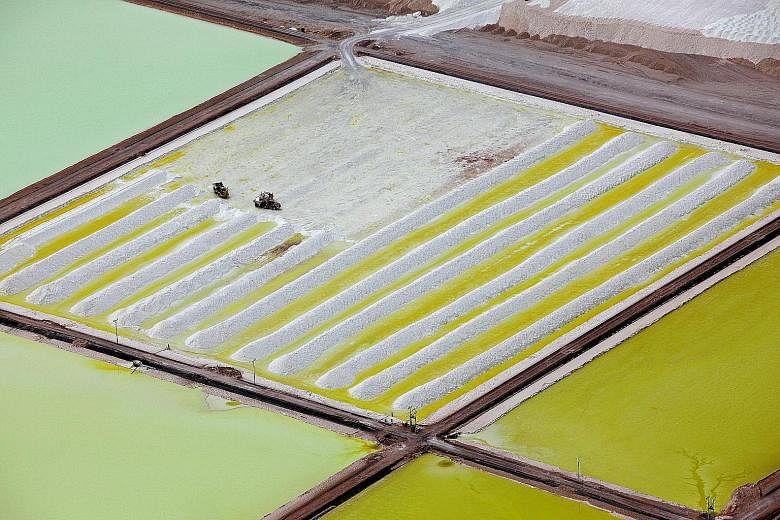Does the world have enough lithium?
It depends on who you ask.
A 2008 study by French researcher William Tahil found there were just 3.9 million metric tonnes of recoverable deposits globally in mineral ores and Andean salt lakes.
That is little enough that the world would risk running out of the material as demand for lithium-ion car batteries and utility-scale storage ramps up over the coming decades.
A survey the following year by consultants Gerry Clarke and Peter Harben, though, concluded there was about 10 times that amount.
Depending on other parameters applied, those numbers suggest deposits could provide lithium for anything from a further 100 million cars - about 10 per cent of the global auto fleet - to 10 billion or more.
That vast range of estimates is inevitable given compounding uncertainties around the quantities available and the amounts needed.
Still, a glimpse of how the sausage is made may help to demonstrate why fears of peak supply for battery materials should be taken with a pinch of altiplano salt.
Calculating mineral reserves is a little like working out the contents of a lucky dip by sticking knitting needles into a box.
Geologists must drill through rock to produce kilometres of core samples, at a cost of several hundred dollars a metre, and then analyse what they have dug up to work out the rough shape and concentration of an irregular ore deposit deep below ground - a mineral resource.
After that, engineers assess the cost of building and running a mine and processing plant, while economists estimate future prices.
Put that financial and economic data together with the geological information and one has a mineral reserve, the gold standard for working out supply availability.
As should be evident, though, that estimate contains multiplying layers of variables. A movement in just one can, for example, make 3.5 billion barrels of oil disappear.
That is one of the reasons people invest in mineral exploration companies: There is always the chance that a few extra bits of data could produce a dramatic change, as when a 2007 update increased the estimated lithium content of Argentina's Salar del Rincon brine lake from 253,000 tonnes to 1.4 million tonnes. Geologists' estimates of Rincon's lithium concentration range from 0.033 per cent to 0.5 per cent, a difference that, on its own, would be enough to increase the resource base by 50 per cent or reduce it by a third.
Then come demand issues. The amount of lithium used per kilowatt-hour of battery power is changing rapidly as manufacturers improve efficiency.
One 2015 study by Citigroup estimated that about two kilograms of lithium carbonate equivalent are needed for each kWh; more recent appraisals by Deutsche Bank and Advantage Lithium reckon the amount is about a third as much.
On top of that, there is the question of how powerful batteries will be. A hybrid Toyota Prius has a 4.4kWh battery; a Tesla Model S can have one as large as 85kWh.
Most analysts base their estimates on the 30kWh to 40kWh range of Nissan's all-electric Leaf, but in truth, it is anyone's guess which size will dominate.
There is another issue. Most analysts expect global lithium demand to double, or even triple, by 2030 - but stronger usage by the battery sector may cause other industries to seek alternative materials.
For instance, only in the last few years have rechargeable batteries started to consume more lithium than glassmaking, where sodium and potassium compounds may be effective substitutes.
As recently as 2007, lubricating grease was almost as important an end-use sector as batteries.
As prices rise, those industries may find alternative chemicals that work as well.
Further off, alternative battery chemistries - based, for instance, on sodium and silicon - may cause lithium-ion cells to go the way of the nickel-iron cells that Thomas Edison hoped would power a previous generation of electric cars.
None of this guarantees that lithium will not run short or that prices will not rise for brief periods in the near term.
If Mr Tahil is right and demand grows fast enough, the market could get awfully tight.
But those hoping for a dearth must reckon with the possibility that we could be hurtling towards a glut instead.
BLOOMBERG

